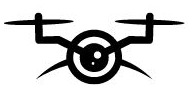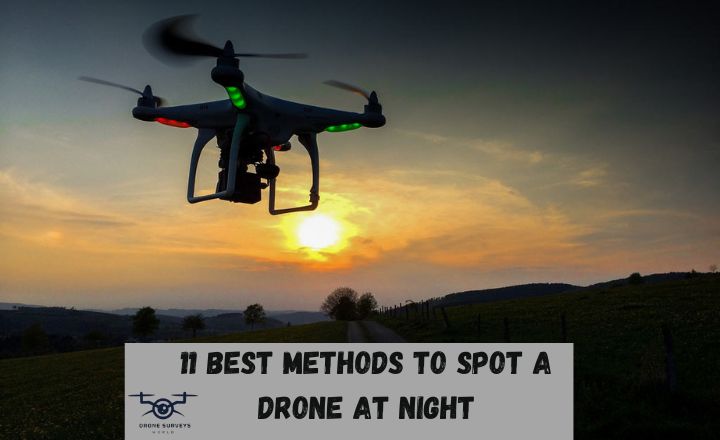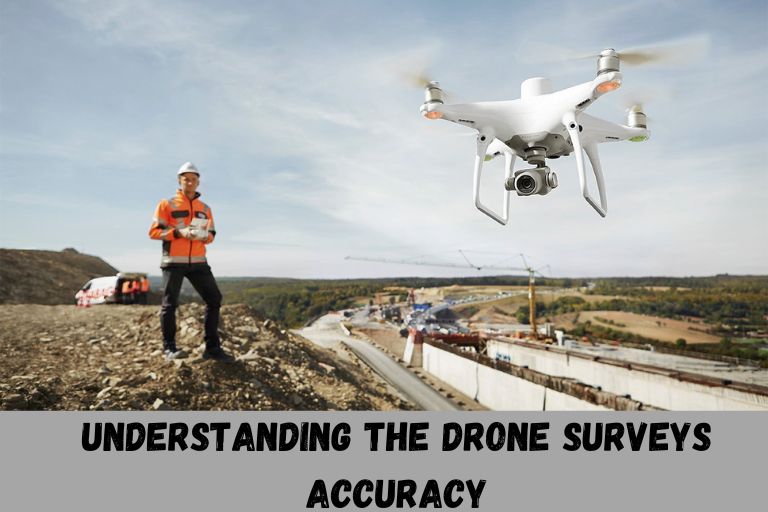In a world where technology continues to advance at an unprecedented pace, the use of drones has become increasingly prevalent in various industries and recreational activities. As we look ahead to 2024, the ability to spot drones at night is becoming a crucial skill for security purposes, privacy concerns, and even just sheer curiosity. We will delve into the 11 best methods that will empower you to spot a drone at night with precision and ease in the year 2024.
How To Spot A Drone At Night?
Some effective methods to detect drones at night are discussed below;
Understanding Drone Flight Patterns
The key aspect to look out includes the hovering capability of drones, as they can remain stationary in mid-air for extended periods. This makes them easily distinguishable from other flying objects which typically have a continuous and fluid movement across the sky.
Drones can quickly change direction, which is a clear sign that one is nearby. Unlike regular planes, drones can move fast and change course easily. Knowing this can help you spot and follow drones at night, improving your awareness and security.
Understanding various drone flight patterns and drone altitudes can help people better see drones, especially at night. Knowing typical drone behavior can help spot suspicious activity and ensure safety in places where drones might be seen.
Drones, especially those equipped with advanced autopilot systems, are programmed to follow specific flight patterns in order to execute tasks efficiently.
- Straight-line path, where drones navigate from point A to point B in a direct line.
- Rectangular pattern, drones move along a predetermined route that forms a rectangle shape, enabling them to cover larger areas systematically.
- Orbiting, drones circle around a central point or object at a specified radius while maintaining altitude and speed.
Recognizing Drone Sounds
We can identify drones by listening to their unique sounds. Drones make a high-pitched buzzing noise that stands out in the quiet night. This noise comes from the propellers spinning fast, giving drones a distinct sound different from other flying things.
Some drones make a low rumbling noise, especially big or strong ones. This noise can travel far and be difficult to locate. By learning to recognize these sounds, you can better find and pinpoint drones in the sky at night.
Drones often emit a consistent, buzzing sound, but subtle changes in pitch can indicate movement or change in direction. By training your ear to pick up on these variations, you can better distinguish between the sound of a drone and other ambient noises.
There are some factors that can affect the ability to recognize drone sounds:
- The environment affects how well we can hear drone sounds. Factors like wind, buildings, and noise levels can make it easier or harder to recognize a drone’s sound.
- Distance also matters – the farther away a drone is, the quieter it sounds, which can make it harder to identify. Obstacles between you and the drone can also make the sound unclear.
- Different drone models make different sounds based on how they are designed and how they move. Knowing these differences can help people tell drones apart by their sounds.
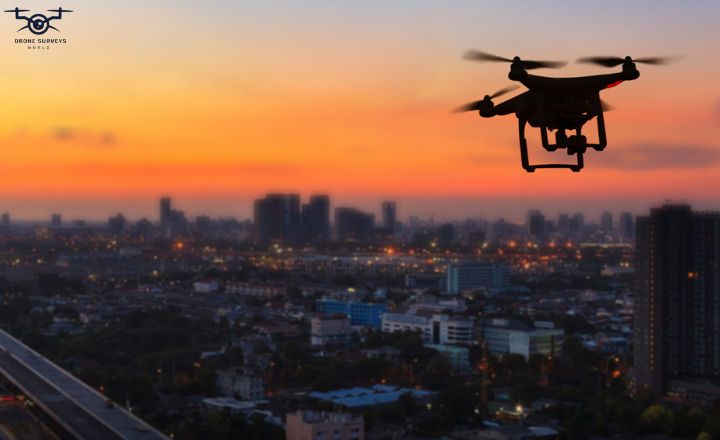
Spotting Drone Lights And Markings
Look for navigation lights on drones. They are usually on the front and back. These lights help you see the drone in the dark. Some drones also have flashing strobe lights to make them more visible.
LED light strips, can often be found on the arms or body of a drone. These bright and colorful strips not only add flair to the drone’s design but also serve as additional indicators of its presence in low-light conditions. By being aware of these various lights and markings, you can enhance your ability to spot drones in the night sky and appreciate their beauty and functionality even after sunset.
Using Night Vision and Thermal Imaging
At night, it can be hard but interesting to see drone lights and symbols. Each drone has unique markings that help identify it in the dark. Night vision devices amplify ambient light, making it easier to identify drones flying overhead or hovering nearby. Look closely at details like light color and placement, as they can be different for each brand.
Key advantages of using night vision:
- Helps security personnel see drones at night by improving visibility in low light.
- Cost-effective solution.
- Compatible with a variety of devices, such as cameras.
Some limitations to night vision are:
- Not effective in completely dark environments where there is absolutely no ambient light available for the device to amplify.
- Vulnerable to atmospheric conditions such as fog or smoke.
- When exposed to high levels of ambient light, night vision devices can struggle to adjust and may even be rendered ineffective.
TIT has changed how we find drones at night by using heat from objects. This technology can spot drones in low light, unlike traditional methods that need visible light. Thermal cameras can track and identify drones by their heat signatures, helping authorities respond quickly to potential threats.
Key advantages of using thermal imaging:
- Independent from ambient light conditions.
- Effective in complete darkness.
- Less affected by atmospheric changes such as fog and smoke.
Limitations of using thermal imaging:
- Higher cost.
- Objects with low temperature differentials can be challenging to capture accurately, leading to potential errors in data interpretation.
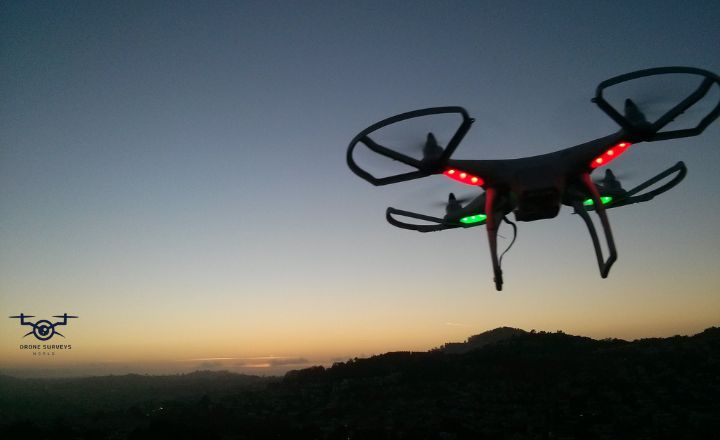
Leveraging Mobile Apps
You can now use your phone to easily see drones flying at night. App to detect drones at night like Drone Watcher and Dark Sky Finder make this possible. These apps use advanced technology to find drones in real-time, even in the dark. By using these apps, you can find nearby drones and get alerts for better awareness.
These apps stand out because they can get live flight data from aircraft transponders through ADS-B receivers. This data shows users details like drone altitude, speed, and direction nearby. It helps them track drones effectively. By using mobile technology to find rogue drones at night, people can now protect their privacy and security from unauthorized aerial intrusions.
Observing Unusual Wildlife Behavior
Animals have an innate ability to sense changes in their environment, and they often display noticeable reactions when something unfamiliar is present.
- Look out for agitated behavior among nocturnal creatures such as owls and bats, as they may become vocal or erratic when detecting a drone flying overhead.
- Pay attention to changes in sound patterns in the wilderness. The sudden disruption of natural sounds by the buzzing of a drone can alert you to its presence even before it becomes visible.
- Keep an eye out for sudden bursts of activity in nocturnal animals, such as owls, bats, or raccoons, as they may be reacting to the presence of a drone nearby.
Becoming Familiar with Common Drone Models
Being able to identify common drone models can be useful in spotting one at night. Some popular drone models are:
- The DJI Phantom series is easily recognizable with its sleek design and signature white body. Its bright LED lights make it stand out in the dark, making it easier to spot during nighttime flights.
- The DJI Inspire model is another widely used drone that is known for its professional-grade features and distinct appearance. With its powerful LED lights, the DJI Inspire is not only easy to spot at night but also provides excellent visibility for capturing stunning footage after dark.
- The DJI Mavic series has gained popularity for its compact size and portability without compromising on performance. With its small frame and bright LED lights, the DJI Mavic drones are agile flyers that can easily maneuver through the night sky.
- Known for its sleek design and advanced features, the Yuneec Typhoon stands out as a top choice for both hobbyists and professionals alike. Its bright LED lights make it easier to spot in low-light conditions, giving it an edge over other models when flying at night.
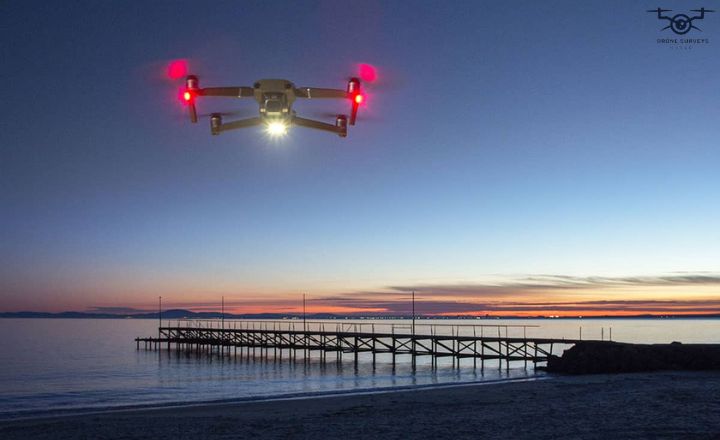
Using Binoculars And Telescopes
The ability to zoom in and focus on specific areas of the sky allows for better visibility, especially in low-light conditions. With modern advancements in technology, binoculars and telescopes are equipped with night vision capabilities that enhance detection abilities in darkness.
Key Features:
- A higher magnification power helps in zooming in on distant objects, making it easier to spot tiny drones flying through the night sky.
- A wide field of view allows you to have a broader visual range and increases your chances of quickly locating the drone.
- Prioritizing binoculars or telescopes with exceptional low light performance is crucial when spotting drones at night.
Track The Radio Frequencies
Drones send live video through radio signals, which can be detected using special equipment. This helps locate drones flying nearby for security and surveillance. Monitoring drone radio signals can identify potential threats in restricted areas.
Security can respond quickly to unusual signals to prevent intrusions. This proactive method improves airspace security at night. Using radio tracking is a reliable way to enhance safety against unauthorized drone activities at night.
Infrared Light Motion Detection
These sensors can find drones even at night when it’s hard to see. This helps security staff spot unauthorized drones accurately and quickly in the dark. Using infrared detectors makes it easier to tell the difference between a bird and a drone flying at night.
With this technology, security teams can react fast to possible threats and reduce risks. Infrared light motion detection systems help protect sensitive areas from intruders in the air, making security measures and threat prevention better.
Use Acoustic Sensors
They work by listening for sounds and vibrations made by drone motors, even if the drone is trying to be quiet. This helps to catch drones that might not show up on radar or cameras. Using these sensors adds extra protection for important places like airports and power plants.
They can quickly find where a drone is coming from and help security teams respond fast. New technology also helps these sensors tell the difference between drones and other things in the sky, like birds or helicopters.
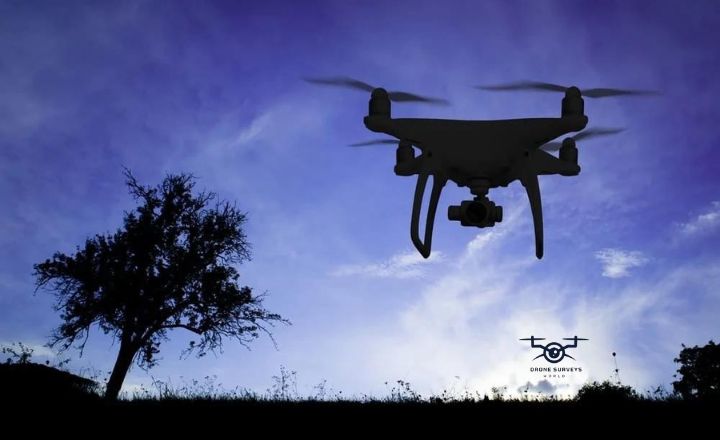
How To Spot A Police Drone At Night
To spot a police drone at night is by looking for the red and white flashing lights typically present on these drones. These lights are used for navigation and visibility purposes, making them easier to identify in the dark. Police drones often emit a low buzzing sound that can help you locate their presence overhead.
Watch how it flies. Police drones move in a grid pattern, covering areas precisely. This sets them apart from planes or helicopters that have different flight paths. By noticing these patterns, you can tell if a drone is a police drone in the dark sky.
Characteristics Of Police Drones Vs. Regular Drones
Police drones and regular drones may seem indistinguishable from a distance, but upon closer examination, their unique characteristics become apparent.
| Feature | Police Drones | Regular Drones |
| Equipment Attached | Special cameras and sensors for specific jobs | Simpler cameras for videography and photography |
| Noise Levels | Quiet for spying | Buzzing sounds |
| Colors and Light Patterns | Blue and red lights are like police sirens | White, green, and red lights are used for visibility and navigation purposes |
| Build and Size | Big for long flights | Small for fun activities like taking pictures |
| Flight Patterns | Systematic, fly in patterns for watching things | Move around more randomly |
What Do Surveillance Drones Look Like At Night?
Surveillance drones at night take on an eerie and mysterious aura as they navigate the darkness with stealth and precision. Equipped with sophisticated thermal imaging technology, these drones appear as silent guardians patrolling the skies, their ominous red or green blinking lights casting an otherworldly glow in the blackness. The whirring sound of their propellers creates a sense of unease in the still night air, reminding us of their constant vigilance even under the cover of darkness.
Wrapping Up
The advancements in technology have made it increasingly challenging to spot a drone at night. With the 11 best methods outlined in this guide, individuals can equip themselves with the knowledge and tools necessary to effectively detect drones in the dark. By utilizing techniques such as thermal imaging cameras, acoustic sensors, and specialized apps, we can enhance our ability to identify drones and ensure safety and security in our airspace.
Frequently Asked Questions
Are There any Restrictions on Flying Police Drones at Night?
In most jurisdictions, there are regulations on flying drones at night, including obtaining proper authorization and following specific safety guidelines.
What Does a Drone Look Like at Night?
Drones can appear as small, blinking lights in the sky at night.
What Color Are Police Drone Lights at Night?
Police drone lights at night typically emit bright white or blue light.
Do Drones Have Lights For Night Flying?
Yes, many drones are equipped with lights to aid in night flying.
